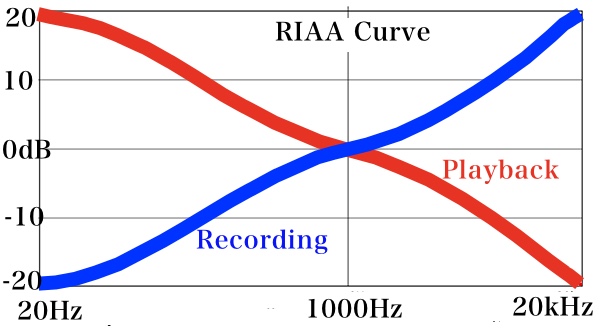Raggae's Delayed Adoption by Jamaican Radio Stations in the 60s and 70s
 The music that dominated the airwaves of Jamaica during the 60s and 70s, was mostly imported. Locally curated music received far less attention, and was noticeably absent when compared to popular songs from America and Britain.
The music that dominated the airwaves of Jamaica during the 60s and 70s, was mostly imported. Locally curated music received far less attention, and was noticeably absent when compared to popular songs from America and Britain.
Because of this disparity there was a shared belief amongst the Jamaican public and local performing artists at that time, that the leadership of the local radio stations, RJR and JBC, perceived locally produced music as an inferior product. It was not until the mid, to late 70s, thanks to a handful of audio engineers at JBC, that the local music, which was popular in the local dance halls began receiving more attention in the broadcast media.
We posed the question to Ray Hitchins: Beyond bias on the part of the leadership, are there other factors that may have also influenced the noticeable absence of local music on the Jamaican airwaves during 1960s and 70s?

The RIAA curve - An EQ standard developed in the early 50s. It was applied to the music on vinyl records and then corrected later during playback by record player amplifiers.
Transcription
My research on Jamaican popular music has largely been focused on recording studio practices and cultures, because it's an area that I understand from the inside looking out, as well as assuming an academic role where you try and look in. And, prior to becoming involved in academia, one of the issues that I had when reading the literature, was that very often an academic perspective... not only academic, the general enthusiast literature as well, would tend to portray a picture of the music industry where the dots had been joined together as opposed to looking at what the details that fell between the dots. And I was really interested in trying to investigate some of those areas and find out what this discrepancy was.
Now having said that, I am as at fault as well as everybody else in terms of academic research and writing, there is nothing you do as a researcher that is ever one hundred percent foolproof, and I think all researchers if they try and maintain any level of objectivity will accept that there is a tendency to be limited by the range of your tools to how you apply them. You know, the old adage if you only have a hammer them you see everything as a nail.
So I suppose the question would be what are those spaces between the dots that I try to locate. So let me take an example; if you think of the Jamaican popular music literature, there is a common narrative that says the radio stations in Jamaica, both RJR and JBC during the 60s and the 70s, had a reluctance to play locally produced music and Jamaican popular music. And, it's a perspective that at the time I also subscribed to, that appeared to be correct to me because it was very difficult to get records played on local radio, even when I arrived in Jamaica in 1981. And, all of the artists who I worked with and spoke to from the 60s and the 70s also supported that narrative. You know, if you had a record; unless you had connections it was very difficult to get it played. And in my research, in talking to Graeme Goodall, something came to light which kind of shed a new perspective on this. And that is, in the international recording industry, the process of mastering is governed by a set of standards which includes something called the RIAA curve, which is... it's the Recording Industry Association of America that sets an equalization curve for the mastering engineer, so that in coordination with record deck manufacturers; what it means is that the mastering engineer can reduce the bass, which is the most difficult thing to put on a record and the record decks would emphasize the bass when it was played back on a domestic record player. All the manufacturers who made record decks subscribed to this RIAA curve, and so the mastering engineers also did the same thing. But of course in Jamaica at the start of the recording industry, records were not being made primarily for domestic consumption, or for being played on the radio, they were exclusive recordings that were played in the sound systems.
Graeme Goodall who was really, in many ways, I think of him as being the father of local audio engineering because he not only trained Sylvan Morris who went to work at Coxsone Dodd and Byron Smith, Smithy, who went to work for Duke Reid but Duke Reid in turn also trained Errol Brown who worked for Bob Marley, and of course Sylvan Morris recorded all of Bob Marley's early recordings. So between those two, that little group of engineers were very influential in the practices that emerged in the local recording industry. Now Goodall tells an anecdote about when Ken Khouri first introduced, or offered the facility of being able to make records locally, in other words the stamper manufacturer he brought to Jamaica, which was previously very expensive for producers to think about making records. So, what they did every week was go into the studios and make acetate disks copies of their recordings. And remember they were first generation copies without mastering per se applied. They just tried to get the maximum level onto the disk which was taken straight to the sound systems and played.
And Khouri introduced a package for the sound system operators that they could buy 100 45rpm records, what they called white label disks; minimum costs, no printing on the labels and those disks were used for the sound systems which had now grown into multiple systems owned by sound system operators, but also associate sound systems who worked in the country areas who would come into Kingston and wanted to buy these recordings, which the sound system owners sold at a great profit. When the first blank label 45s were made, Goodall made the assumption that he was making a record, so he mastered it using the RIAA curve. But he got a complaint immediately from Coxsone Dodd who asked him to come down to the sound system one evening and listen to the 45 compared to an acetate disk. And it's very interesting in the way that Goodall describes that experience because he says that when he went to the sound system, he immediately realized when he listening to the record, that what people wanted to hear was not a clear voice and clear midrange and a pristine top end. All they wanted to hear was driving bottom end on that record to make them get up and dance, cause when you dance you got hot and sweaty, and when you got hot and sweaty you bought liquor, or some type of drink. Which is how the sound system operators basically made money.
And Goodall describes going back to the mastering studio and remastering that record, and discarding the RIAA curve. So, the objective changed at that point in the production of Jamaica's popular music, because basically they discarded an international standard that records were made at. And the problem with that process, although it was great for the sound system operators it would have played havoc with radio stations at that time, because when you brought that record into the radio station, the transmitter and the amplifier, that sits in front of the transmitter, would not have been able to handle that low frequency eloquently. In other words, there is a set of parameters that are set on the stations output transmitter that changes the EQ and the compression and all those things. And to confirm this I spoke to Melvis Cummings in about 2007, who was then the head of engineering at RJR, and he was able to confirm that yes, every radio station in the world uses an Orban Opticoder, which basically packages the signal before it goes to the transmitter, and that system typically assumes that the recorded music, certainly in the 60s and 70s, it would have expected that it had the RIAA curve. So that would have made it very difficult to play a lot of Jamaican music that was intended for sound system consumption. So, the level to which that has had an impact on the acceptance of records within the radio station is still an area that needs to be... have further research performed. But it certainly would have had a significant impact because radio stations sell product on the basis of the quality of their sound.
The point I am making is that this is a technical area that has influenced this subject of prejudice towards Jamaican music and the playing of it on radio stations. That doesn't mean to say that there wasn't a prejudice that existed coming out of the colonial experience. And, I am in no way trying to say that that did not exist or minimalize it. I'm just saying that there were other factors that have not yet been considered and it's important for researchers to look at these details in order for us to fully understand what the picture was in the industry at that time.
 The music that dominated the airwaves of Jamaica during the 60s and 70s, was mostly imported. Locally curated music received far less attention, and was noticeably absent when compared to popular songs from America and Britain.
The music that dominated the airwaves of Jamaica during the 60s and 70s, was mostly imported. Locally curated music received far less attention, and was noticeably absent when compared to popular songs from America and Britain.
